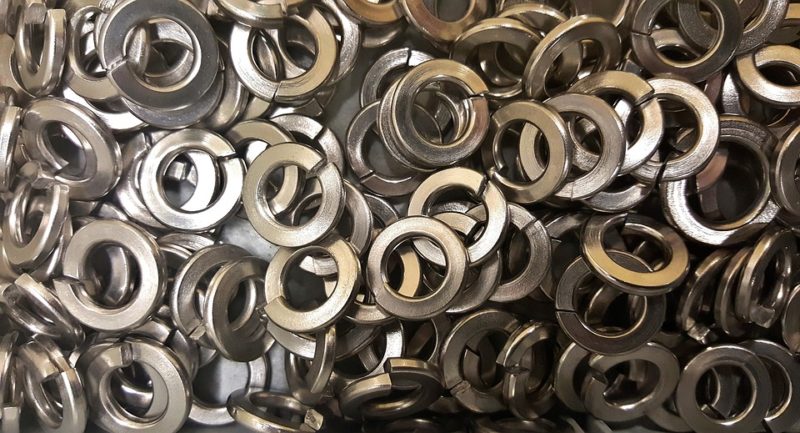Are you trying to search about how to use a lock washer? The best way to use the lock washer is to put your lock washer for a first, underneath the fastener, to assist it in achieving this. Other washers or physical parts required for the operation should be installed before the lock washer to support the structure. A lock washer should be used with rivets to provide a clean, flat surface for the nut to twist against, distributing pressure more evenly on ductile materials and preventing squeeze. In this article, we’ll go over what lock washers are and how you use them.
Before everything else, let’s understand first the basics of a lock washer; it is a particular sort of washer meant to keep the fastener it’s attached to from slipping. They’ll transfer a load of something like the secured object or objects more equally, much as other washers.
On the other hand, locking washers can go a bit far by “locking” the screws in order. Fasteners tend to loosen with time. A bolt inserted in a device or electronic device may loosen with time. The pin can gradually find its way out from the fastener hole where it has been inserted. By keeping the bolt in position, locking washers stop that from happening. If the screw is fastened with a locking washer, it will not loosen even if the machine or equipment causes a lot of vibrations. There is so much more to learn about this topic. Friends, if you’re interested in learning more about this topic, stay with us till the finish! Let’s get down to the article!
Types Of Lock Washer
There are three types of locking washers, their names are;
- Split locking washer
- Wedge locking washer
- Spring locking washer
Ways To Use A Lock Washer
Are you curious to know about how to use a lock washer? Well, in this paragraph, you’ll get the answer. Here are the methods which help you in using a lock washer:
#1. Put the lock washer through the threaded fastener
When it’s used appropriately, a lock washer will keep the nut or some other screw fastener in rest. Put the lock washer on the first, underneath the fastener, to assist it in achieving this. Other washers or hardware parts required for your project should be installed well before the lock washer because it can prevent sticking.
#2. Ensure that your washer is securely fastened to the fastener as well as the other area
Your lock washer must push against all of the threaded fastener and some other adjoining surface to create a proper connection. If somehow the attachment isn’t secure, tighten it with the fastener. This is especially critical while locking nuts that need the notched washer’s holes to close, including the right-wing gun grooves.
#3. Adjust the tension on your threaded fastener
Tighten the screw or threaded fastener by spinning a screwdriver or ratcheting clockwise for modest, general-purpose operations. This should be done till the screw is tight but yet able to be removed if needed. Check your project handbook or nut base markings for a precise load torque for massive or specialized work, using a torque wrench to lock the fastener to the particular quantity.
#4. Check to see that your washer is in good working order
Check to verify if the nut or bolt head fits snuggly any grooves on the washer. If you’re using split washers, ensure they’re somewhat out of place, suggesting that they’re pulling on the bolt or nut. If the washer isn’t working correctly, unscrew the nut or screw fastener and replace it. You may want to know the washing machine fault codes.
#5. Wear-and-tear washers should be discarded
Serrated Belleville lock washers, for example, can easily tolerate many usages. Other types of washers, such as split locks, wear out after only one or two usages. Split lock washers and broken washers should not be reused for safety reasons. When working at height connections, avoid using outdated washers at all costs.
#6. If you can’t pull the washer off, spray it with lubrication
Spritz the surface with a piercing grease like WD-40 or PB Blaster Penetrating Catalyst if the lock washer won’t move. It will help loosen your washer and allow you to remove it more easily. [
#7. For simple jobs, use a split lock washer
One of the most popular lock washers is a split lock washer, also termed a spring force washer. Rather than grooves, it works somewhat like a spring, employing tension to keep the threaded fastener in action. When doing a small, low-intensity operation, utilize a split lock since larger loads compress the washer and render it worthless.
#8. Using a flat screwdriver, pull the lock washer off
Insert the screwdriver tip below the washer or within the split when extracting a split washer. Place your wrench head underneath a tooth and press up, continuing with much more teeth if required to remove a washer with teeth. Set your screwdriver head just under the washer and press up for other washers. Whenever the washer is replaced, it may fracture depending on the level of stress which is under.
It’s A Wrap!
We are happy that you all got the answer to how to use a lock washer! In a few easy ways, you can. I know, it’s not something extraordinary; you can do all these with a breeze. Anyway, if you love reading more articles; check out how to use a washer and how to use a washer machine. Have a great day!

